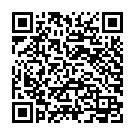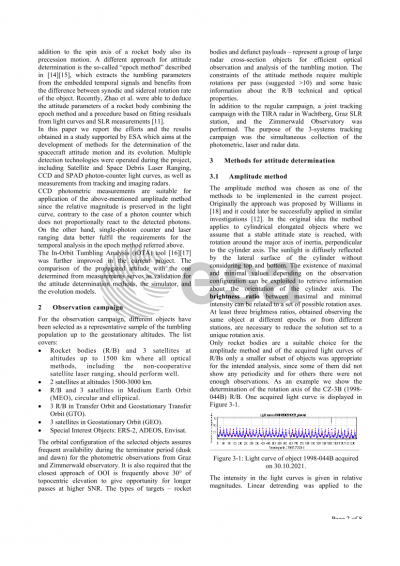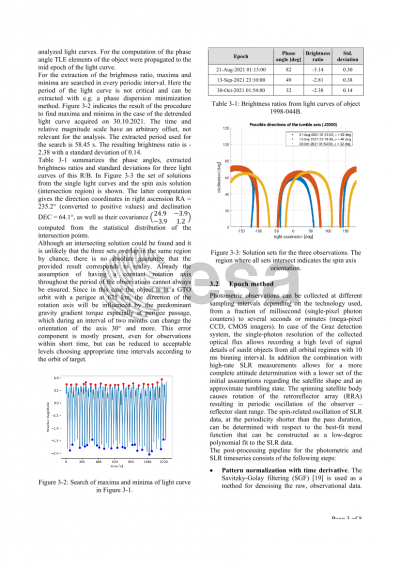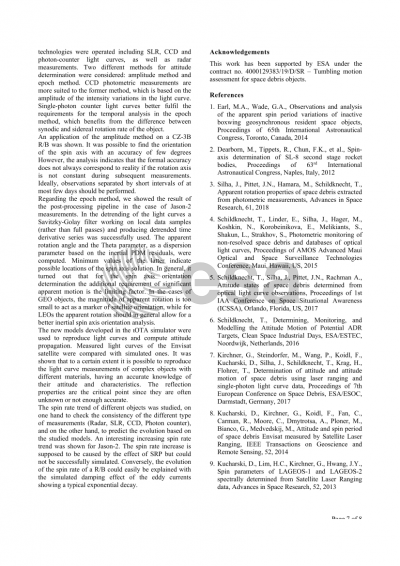Document details

Abstract
The knowledge of the attitude dynamics of passive space objects or decommissioned satellites gains importance in the rapidly growing sector of Close-Proximity Operations (CPO) for In-Orbit Servicing or Active Debris Removal. In particular knowing the spin axis orientation, the spin period and the rate of change of such parameters in the reference system of choice is necessary for the optimum decision on the method that will be used to perform the in-orbit operation safely and efficiently.
In this paper we report the efforts and the results obtained in a study supported by ESA which aims at the development of methods for the determination of the spacecraft attitude motion and its evolution. Multiple detection technologies were operated during the project, including Satellite and Space Debris Laser Ranging, CCD and SPAD photon-counter light curves, as well as active radar tracking. The data from these observation techniques can be partially exploited in a complementary way through two different approaches for attitude determination known as “amplitude” and “epoch” methods. CCD photometric measurements are more suited to the former method, which is based on the amplitude of the intensity variations in the light curve. On the other hand, the laser ranging data and the single-photon counter light curves better fulfil the requirements for the temporal analysis in the epoch method, which extracts the tumbling parameters from the embedded temporal signals and benefits from the difference between synodic and sidereal rotation rate of the object. In addition to the combination of these two approaches, radar measurements of selected objects-of-interest were performed for validation during a joint tracking campaign.
Models for the attitude evolution were analysed and simulated using the In-Orbit Tumbling Analysis (ιOTA) tool, which was further improved and validated in the current project. The comparison of the propagated attitude with the one determined from measurements serves as validation for the attitude determination methods, the simulator, and the evolution models.
Preview









